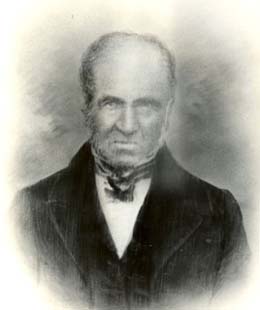On August 31, 1811, members of the Pacific Fur Company, known as the Astorians, reach the junction of the Okanogan and Columbia rivers, where they build Fort Okanogan, the first American trading post in Washington state (near present-day Brewster, in Okanogan County). The Pacific Fur Company is a new business enterprise of New York fur baron John Jacob Astor (1763-1848), who intends to establish a transcontinental trade network between the Missouri River and the Pacific coast.
Paddling Toward a Smooth Stream
Pacific Fur Company partner David Stuart (1765-1853) led the party, which consisted of three clerks, three French-Canadian paddlers, one Hawaiian worker, two Kootenai Indian women, and a small dog named Weasel. Traveling in two dugout canoes purchased from the Chinook Tribe near the mouth of the Columbia, the Astorians had departed from their newly established Fort Astoria on July 22. A journal kept by clerk Alexander Ross (1783-1856) provides a firsthand account of the journey upstream.
After camping near the mouth of the Methow River on August 30, the Astorians paddled upriver on the Columbia "till we reached the mouth of a smooth stream called Oakinacken" (Ross, 151). Their leader, David Stuart, was hoping to find a suitable site for a trade house somewhere in the vicinity, for he knew that David Thompson of the North West Company out of Montreal had built four posts farther east, and Stuart was anxious to establish his own trade network on the Columbia. His voyageurs pushed two miles up the tributary, then stopped for the evening. As the men pitched their tents, they were joined by "a great concourse of Indians" whose leaders urged the furmen to settle nearby (Ross, 151). These people belonged to a band of the Southern Okanogans or Sinkaietks who spent part of each year at a village known as t'kuya'tum, near the mouth of the Okanogan.
The Astorian party included Michel Boulard, a veteran of the North West Company who had learned rudimentary Salish during four years in the interior, and he probably served as interpreter. David Stuart at first pretended to resist the entreaties of the Sinkaietks, then finally consented. According to Ross, "the chiefs immediately held a council, and then pledged themselves to be always our friends, to kill us plenty of beavers, to furnish us at all times with provisions, and to ensure our protection and safety" (Ross, 151).
The Good Comet Flaugerbues
That evening the travelers noticed a brilliant comet streaking across the western sky, about 20 degrees above the horizon. This was the Comet Flaugerbues, then located in Leo Minor, which was wowing viewers across the northern hemisphere. Alexander Ross wrote that the group of Sinkaietks encamped nearby "at once said it was placed there by the Good Spirit -- which they called Skom-malt-squisses -- to announce to them the glad tidings of our arrival; and the omen impressed them with a reverential awe for us, implying that we had been sent to them by the Good Spirit, or Great Mother of Life."
The next morning (September 1), cheered by this good omen, the Astorians set off down the Okanogan in search of a building site. Stuart decided upon a level spot on a wide plain on the south bank of the river, about a half mile above its junction with the Columbia. This site provided a strategic business location close to both a tribal trail that ran north and to an important tribal trade center at the junction of the two rivers.
Ross judged its general aspect to be "barren and dreary. On the west the hills are clothed with thick woods -- a dense forest: on the south and east, the scene is bare; but to the north the banks of the river were lined with the willow and poplar, and the valley through which it meanders presents a pleasing landscape" (Ross, 152).
After visiting with various tribal groups who assembled to greet them, the newcomers began collecting driftwood for building material, there being little timber in the vicinity. Over the next few days they erected a small house, approximately 16 by 20 feet, and dug a cellar in the center to store more than a thousand pounds of trade goods they had transported upriver. In mid-September, with the building only half completed, four of the men departed downstream in an express canoe for Fort Astoria, while David Stuart and three others headed north to explore the upper Okanogan, leaving Alexander Ross and the little dog Weasel to man the new outpost.

